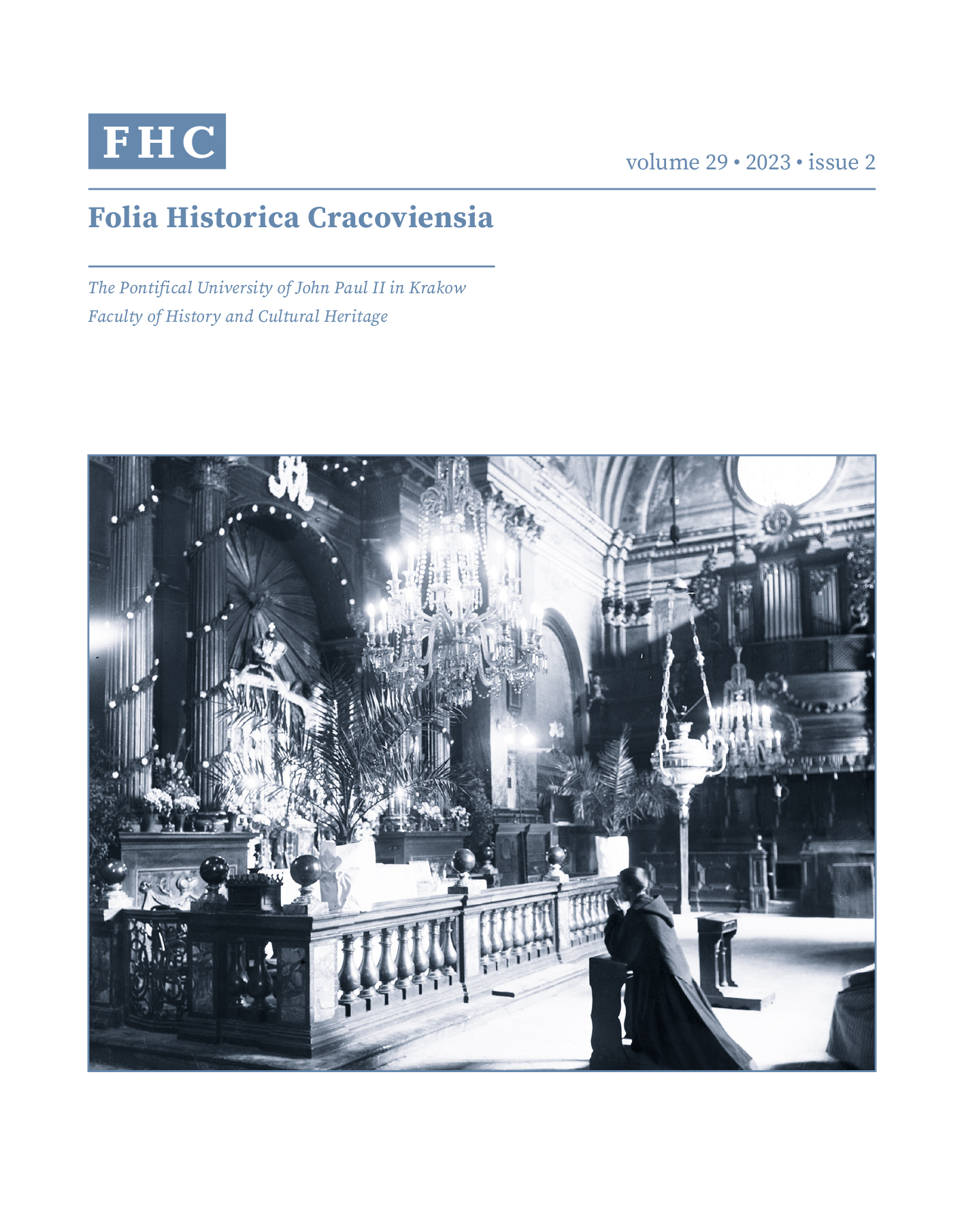Francesco Placidi and Ludwig Ladislaus. On architect and sculptor partnership in the 1740s and 1750s
Francesco Placidi and Ludwig Ladislaus. On architect and sculptor partnership in the 1740s and 1750s
Author(s): Paulina Kluz, Józef SkrabskiSubject(s): Fine Arts / Performing Arts, Architecture
Published by: Wydawnictwo Naukowe Uniwersytetu Papieskiego Jana Pawła II w Krakowie
Keywords: Francesco Placidi; Ludwig Ladislaus; baroque; Kraków; baroque architecture; baroque sculpture
Summary/Abstract: Two artists, Francesco Placidi from Rome and sculptor Ludwig Ladislaus from Opava, played a significant role in Krakow artistic circles of the 1740s and 1750s. Placidi was brought to Poland by another Roman architect, Gaetano Chiaveri, under whose guidance he directed the construction of the court church in Dresden, and was active in Kraków since 1742. Ladisalus was first recorded in the records of the city of Krakow in 1741. The two lived in the same parishes, first All Saints’ and then St Mary’s, and were connected both socially and professionally. Following the study of sources and styles, it was determined that Placidi designed and Ladilaus executed the interior furnishings of the parish church in Morawica (c. 1748–55) funded by Aleksander August and Maria Zofia Czartoryski, the main altar in the Sanctuary of the Crucified Christ in Kobylanka (c. 1750) funded by Jan Wielopolski, and the main altar in the former collegiate church in Sandomierz (1756–57). A detailed investigation outlined the origin of architectural solutions defined by Placidi and captured the stylistic and formal features that Ladislaus’s sculptures share. The case is but a contribution to further research on the mutual relations between designers and makers of architecture and sculptures. Especially with respect to the roles of both the Italian architect imposing (or not) the general and/or detailed concept of the work, and the sculptor following (or not) the designer’s ideas, yet also contributing his own formal and stylistic solutions resulting from his individual artistic path of development (in the case of Ladislaus: in the Austrian Silesia). Beyond doubt, with his extensive contacts with ecclesiastical and secular aristocracy and the royal court, Placidi played an important role in Kraków, providing a link between artists of various professions, and maintaining familial and social contacts with some.
Journal: Folia Historica Cracoviensia
- Issue Year: 29/2023
- Issue No: 2
- Page Range: 121-167
- Page Count: 47
- Language: English

